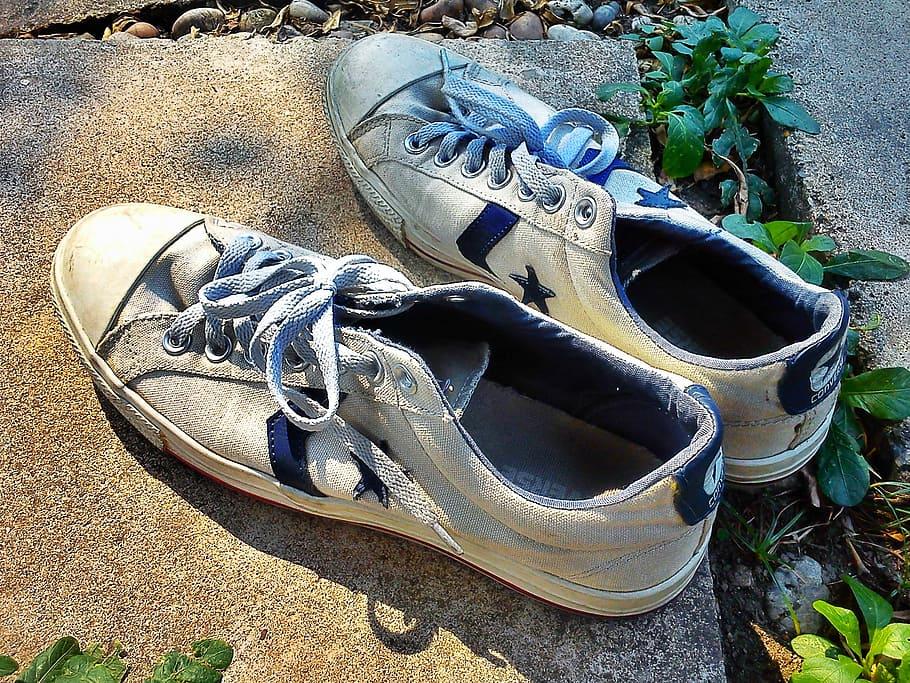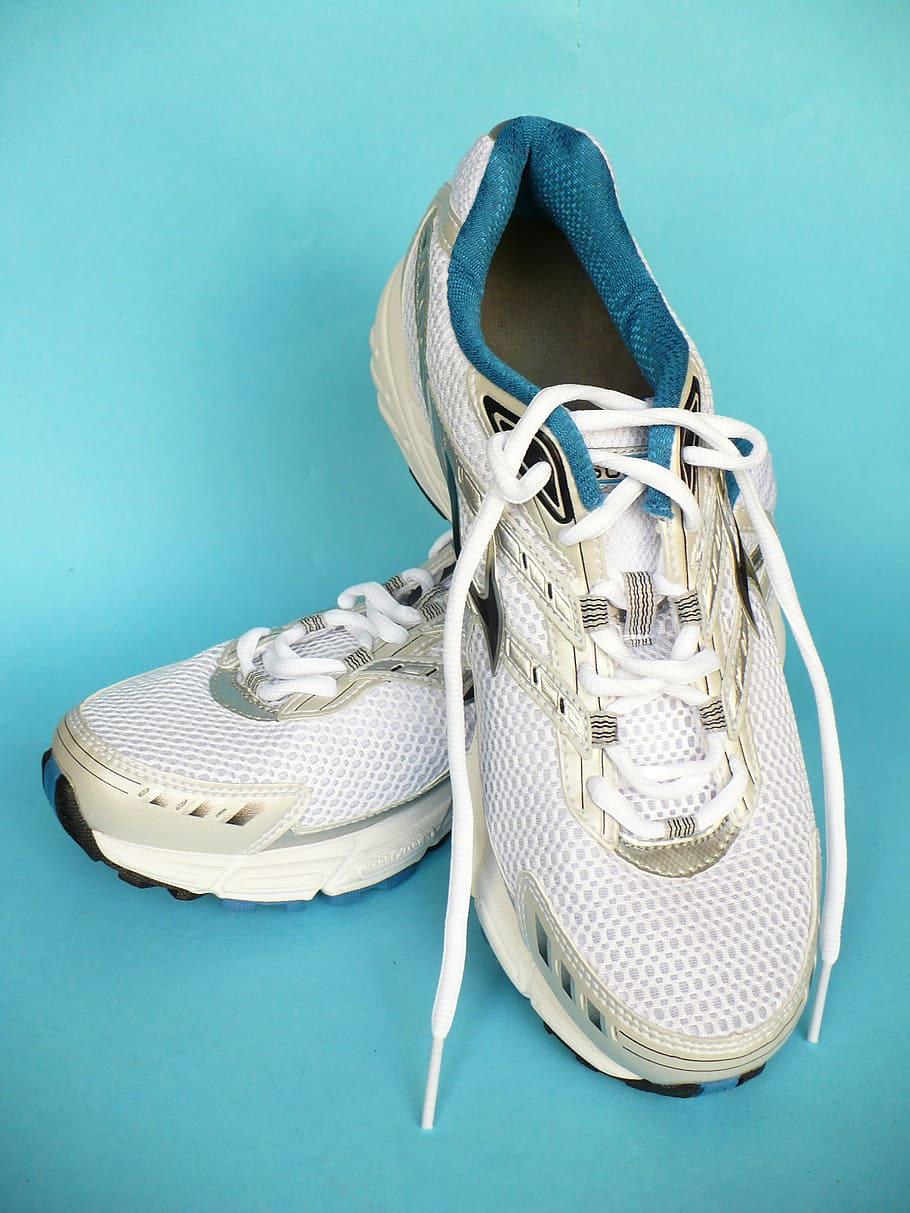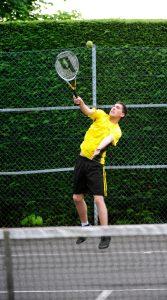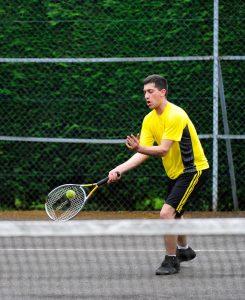We may earn money or products from the companies mentioned in this post.
Introduction

Welcome to the world of tennis, where every step you take on the court matters Whether you’re a seasoned player or just starting out, having the right pair of tennis shoes is crucial for your game Tennis shoes not only enhance your performance but also reduce the risk of injuries, allowing you to play at your best
Enhancing Performance
When it comes to playing tennis, agility and quick movements are key The right pair of tennis shoes can provide the necessary support and stability needed for those lightning-fast sprints across the court With their specialized features such as durable outsoles and lateral support, these shoes help you maintain balance and control during intense rallies They allow you to swiftly change direction without compromising on grip, ensuring that every shot is executed with precision
Reducing Injury Risks
Tennis involves repetitive movements that put stress on your feet, ankles, and knees Without proper footwear, this can lead to discomfort or even serious injuries over time Tennis shoes are designed with cushioning systems that absorb shock and provide impact protection, reducing strain on your joints Additionally, they offer excellent ankle support to prevent sprains and twists during sudden stops or pivots on the court
Factors to Consider when Choosing Tennis Shoes

-
Foot Type:
Understanding your foot type is essential in selecting the right tennis shoes Whether you have high arches, flat feet, or normal arches will determine the level of support and cushioning required -
Court Surface:
Different court surfaces like clay, grass, or hard courts have varying levels of traction requirements Ensure that your shoes are suitable for the specific surface you play on most frequently -
Fit and Comfort:
Tennis shoes should fit snugly but not too tight Look for a pair that provides ample room for your toes to move freely while offering a secure fit around the midfoot and heel -
Durability:
Tennis shoes undergo significant wear and tear due to the rigorous movements involved in the sport Opt for shoes with durable materials, reinforced toe caps, and robust outsoles to ensure they can withstand the demands of the game -
Breathability:
Playing tennis can make your feet sweat, so it’s important to choose shoes that allow proper ventilation Look for mesh or perforated uppers that promote airflow, keeping your feet cool and comfortable throughout your matches
Your choice of tennis shoes can have a profound impact on your performance and overall enjoyment of the game By considering these factors when selecting your footwear, you’ll be well-equipped to dominate the court with confidence!
Understanding your foot type and playing style

When it comes to tennis, understanding your foot type and playing style is essential for optimal performance on the court Your foot type can affect how you move and distribute weight, while your playing style determines the demands placed on your feet during a match Let’s dive into these two factors to help you better understand your unique needs as a tennis player
Determining foot type
To determine your foot type, you can start by performing a wet test for arch height Simply wet the soles of your feet and step onto a piece of paper or cardboard to leave an imprint Analyzing this imprint will help you identify if you have flat feet (low arch), normal arches, or high arches
-
Flat feet (low arch):
If the imprint shows nearly the entire sole of your foot with little to no curve in the middle, you likely have flat feet Flat-footed individuals tend to overpronate, which means their feet roll inward excessively when walking or running -
Normal arch:
If the imprint shows a distinct curve along the inside of the foot with about half of the arch visible, you have normal arches This is considered ideal as it provides good shock absorption and stability -
High arch:
If only a thin line connects the heel and ball of your foot in the imprint, you have high arches High-arched individuals often underpronate or supinate, meaning their feet roll outward during movement
In addition to determining arch height, it’s also important to consider pronation and supination – how your feet naturally roll when in motion
-
Overpronation:
Overpronation occurs when the foot rolls inward excessively, putting extra stress on the inner edge Flat-footed individuals often overpronate, which can lead to instability and potential injuries -
Neutral pronation:
Neutral pronation is considered ideal, as it involves a balanced and efficient rolling motion of the foot, providing good shock absorption and optimal weight distribution -
Underpronation (supination):
Underpronation or supination happens when the foot rolls outward too much during movement High-arched individuals are more prone to underpronate, which can result in insufficient shock absorption
Identifying your playing style
Now that you have a better understanding of your foot type, let’s move on to identifying your playing style Your playing style determines how you approach the game and what kind of movements you typically make on the court
-
Baseline player:
As a baseline player, you prefer staying near the back of the court and rely on powerful groundstrokes to control rallies This style requires stability and good lateral movement as you navigate side-to-side while hitting shots from behind the baseline -
Serve-and-volley player:
Serve-and-volley players like to mix things up by coming forward quickly after serving to attack at the net This aggressive style demands quickness in transitioning from serve to volley and requires strong support for sudden direction changes -
All-court player:
An all-court player adapts their game depending on the situation They can play effectively from both baseline and net positions, blending power with finesse This versatile style requires well-rounded footwear that offers a balance of stability and agility
By understanding your foot type and playing style, you can make informed decisions when selecting tennis shoes that provide the necessary support, cushioning, and traction for your specific needs on the court Remember, finding the right footwear tailored to your feet and playing style is crucial for enhancing performance and reducing the risk of injuries
Key Features to Look for in Tennis Shoes

Cushioning and Shock Absorption
When it comes to tennis shoes, cushioning and shock absorption are crucial for providing comfort and reducing the impact on your joints There are different types of cushioning materials to consider, such as EVA foam midsoles and PU (polyurethane) midsoles EVA foam midsoles offer lightweight cushioning, while PU midsoles provide enhanced durability
The location of the cushioning in the shoe is also important The heel area typically houses extra padding to absorb shock during quick stops and pivots, while the forefoot area may have additional cushioning to provide a responsive feel when running or lunging
Support and Stability
To perform at your best on the tennis court, you need proper support and stability from your shoes The upper shoe construction plays a significant role in this aspect Whether made of leather or synthetic materials, a well-constructed upper provides stability around the foot
In addition to material choice, ventilation and breathability are essential for keeping your feet cool during intense matches Look for shoes with breathable mesh panels or perforations that allow air circulation
For added stability, some tennis shoes feature a midfoot shank—an internal piece that extends from the arch area to the heel—for torsional support This helps prevent excessive twisting of the foot during lateral movements
Outsole Durability
Tennis involves frequent movement on various court surfaces, so having durable outsoles is vital for long-lasting performance Different types of outsole materials cater to specific court surfaces:
-
Hard Court Outsoles:
Designed with durable rubber compounds that can withstand abrasion and provide excellent traction on hard courts -
Clay Court Outsoles:
These outsoles feature a herringbone or zigzag pattern to prevent clay from sticking, ensuring optimal grip and sliding control -
Grass Court Outsoles:
Designed with smaller, more widely spaced studs or nubs that offer traction on grass without damaging the court’s surface
Traction patterns also play a role in outsole performance Look for shoes with multidirectional patterns that offer grip during quick lateral movements and forward propulsion when sprinting towards the ball
Weight, Fit, and Comfort
The weight, fit, and overall comfort of tennis shoes can significantly impact your performance on the court Finding the right size is crucial—neither too tight nor too loose—to ensure a secure fit without compromising comfort Proper sizing techniques include measuring both feet and trying on shoes with sports socks that you would wear during play
During intense matches, foot swelling is common Therefore, it’s essential to choose shoes that allow some room for this natural expansion without causing discomfort or pain Some shoe models incorporate stretchable materials or adjustable features like straps or laces to accommodate foot swelling while maintaining a snug fit
Overall, considering these key features will help you find tennis shoes that provide the necessary cushioning, support, durability, and comfort for your game Whether you’re an occasional player or a seasoned pro, investing in quality tennis footwear will enhance your performance and protect your feet from potential injuries
Selecting the Right Tennis Shoes Based on Court Surface

Hard Courts
When playing on hard courts, it is crucial to choose tennis shoes with durable outsoles Hard court surfaces can be unforgiving and abrasive, causing excessive wear and tear on the soles of your shoes By opting for tennis shoes with tough and resilient outsoles, you ensure that they will last longer and provide excellent traction throughout your matches
In addition to durability, lateral support is another essential factor to consider when selecting tennis shoes for hard courts The fast-paced nature of this surface requires quick side-to-side movements, putting stress on your ankles and feet Look for shoes that offer excellent lateral support to prevent injuries and enhance stability during intense rallies
Cushioning is also vital when playing on hard courts The repetitive impact from constant running and jumping can take a toll on your joints and muscles over time To minimize the risk of discomfort or long-term damage, prioritize tennis shoes with ample cushioning in the midsole area This will help absorb shock and reduce the strain on your body during play
Clay Courts
When stepping onto a clay court, one key consideration is selecting tennis shoes with non-marking outsoles specifically designed for clay surfaces These specialized outsoles prevent leaving marks or damaging the soft surface while providing optimal performance
Traction is paramount when playing on clay courts as they are known for their slippery nature Look for tennis shoes that offer superior grip to avoid losing your footing during quick direction changes or sudden stops Optimal traction ensures you maintain balance and agility throughout each point
Grass Courts
Grass courts present a unique challenge due to their uneven surface compared to other court types Stability becomes an essential factor when selecting tennis shoes for grass courts Look for shoes that provide excellent support and stability to help you navigate the uneven terrain with confidence
Specialized outsole patterns are crucial on grass courts The grass surface demands specific traction patterns to prevent slipping and sliding Tennis shoes designed for grass courts often feature small, closely spaced studs or dimples on the outsole, enhancing grip and stability during lateral movements
By considering these factors and selecting tennis shoes tailored to each court surface, you can optimize your performance and minimize the risk of injuries Remember to prioritize durability, lateral support, cushioning, non-marking outsoles, traction, stability, and specialized outsole patterns based on the type of court you’ll be playing on
Conclusion

In conclusion, when it comes to choosing tennis shoes, there are several key factors to consider First and foremost is the fit of the shoe It should provide a snug yet comfortable feel, with enough room for your toes to move freely Secondly, the type of court surface you play on is crucial in determining the right shoe for you Different surfaces require different traction and support levels
Another important factor to keep in mind is the level of cushioning and support offered by the shoe This can greatly impact your performance and prevent injuries such as ankle sprains or shin splints Additionally, considering your playing style and foot type can help narrow down your options further
Investing in proper footwear for tennis is not just about style or brand name; it’s about optimizing your performance on the court while minimizing the risk of injuries By choosing shoes that offer the right fit, traction, support, and cushioning for your individual needs, you are setting yourself up for success
Remember that tennis involves quick lateral movements, sudden stops, and pivots – all of which put stress on your feet and ankles Wearing ill-fitting or unsuitable shoes can lead to discomfort, blisters, or even more severe injuries that could sideline you from playing
Taking the time to find the perfect pair of tennis shoes may seem like a small detail compared to other aspects of training or strategy However, it is an investment in your overall performance and well-being on the court So don’t underestimate its importance!
Useful Links

How to choose your tennis shoes
How do you choose your tennis shoes?
Tennis Shoe Foundations: How to Find the Perfect Court Shoes
How to Choose Tennis Shoes | Foot Type, Playing Style, …
GEAR GUIDE: Choosing the Right Tennis Shoes
How to Pick the Right Tennis Shoes
How To Choose Your Adult Tennis Shoes?
How To Choose Tennis Shoes – (Mar, 2023)
11 Best Shoes For Tennis Players: Men’s & Women’s (2023)
How Do You Choose The Right Tennis Shoes?
All-In-One Guide to Picking the Right Tennis Shoes
How to Choose the Best Kids Tennis Shoes
The Art and Science of Choosing a Tennis Shoe: “The foot …
When is it time to buy a new pair of tennis shoes
Court Shoes for Tennis and Pickleball | – Game-Set-Match
The 10 Best Men’s Tennis Shoes For 2023 – [In Depth Review …
Solved! How Should Tennis Shoes Fit?






